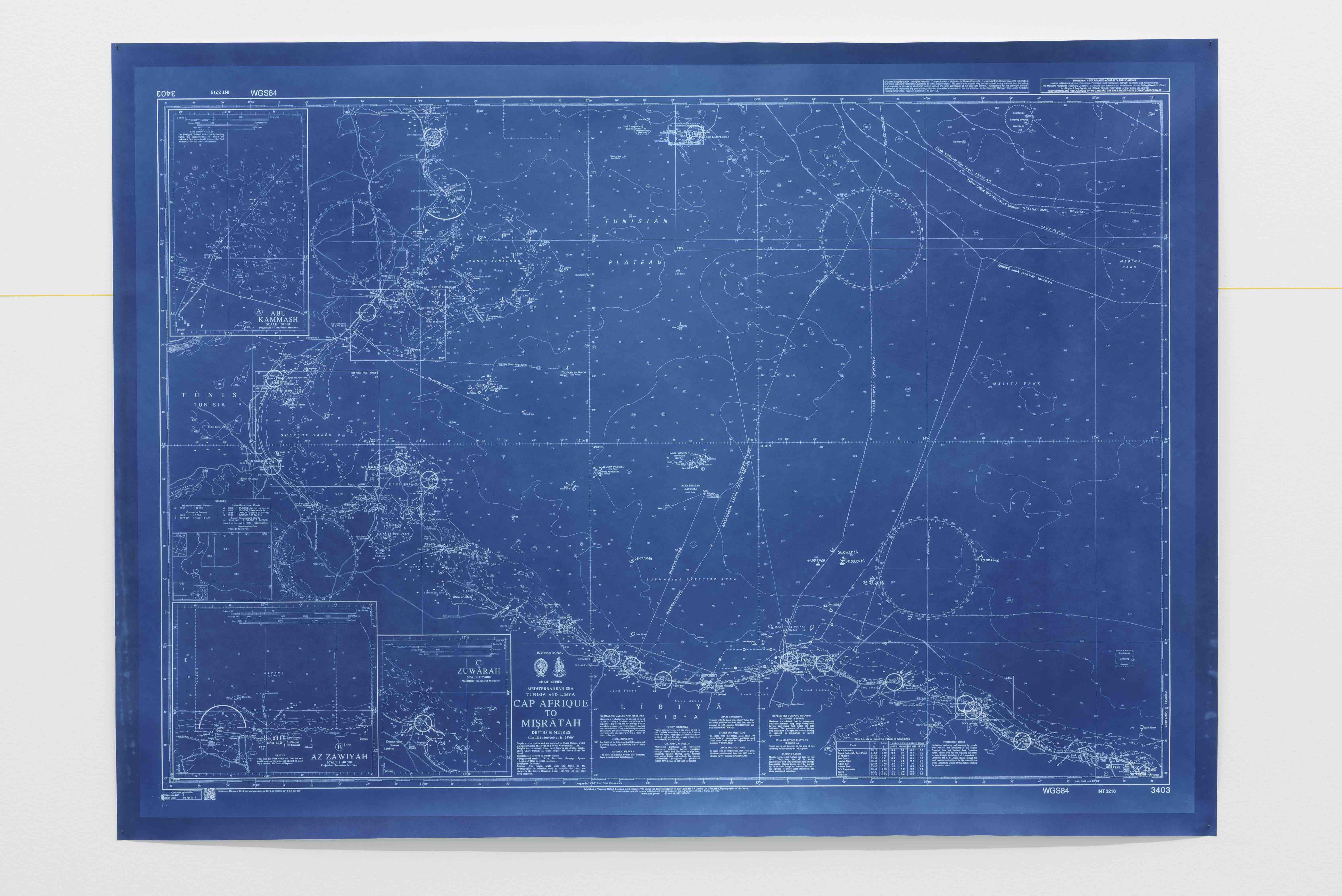Her practice, combining video, installation, photography and sculpture, has delved deep into the history of her country, from Italy’s central role in ancient history, to the nation’s difficult past during the Years of Lead.
Biscotti’s work has been shown at major international exhibitions, including the Venice Biennale, Documenta and Manifesta. Her work is currently on show at MAXXI (Rome) as part of the two group exhibitions “artapes #1. Walking around the clock” and "Re-evolution: the place to be" as well as at "Snap. Documentary and portrait" at the Museum of Contemporary Art in Oslo.
H A P P EN I N G spoke to the artist on occasion of LISTE.
Could you briefly explain the work you are presenting at LISTE?
The work I am showing at LISTE is part of the long-term project The Journey, (2016 — ongoing) produced by Eindhoven’s Van Abbemuseum and on show with galerie mor charpentier at LISTE. The Journey presented here is the result of geopolitical research into an area of the Mediterranean sea between Italy, Tunisia, Libya and Malta, which takes the form of a series of maps showing various layers of information, including data on shipwrecks, underwater cables, military control on borders and license agreements between electric and oil companies. The project will be crowned by a performance taking place next Spring, whereby a block of marble will be dropped into the Mediterranean Sea.
You have spoken about the relationship between history and fiction in your work. How does this play out in this series?
Today, I talk about narration as a means to tie together segments of historical events. Through montage, we enter into the realm of fiction, and this new narrative exists on the same plane previously existing ones.
Rossella Biscotti, The Journey (From Cape Africa (Tunisia) till Misrata (Lybia), 2016. Blueprint. Installation view at van Abbemuseum, Eindhoven. Courtesy the artist and mor carpenter gallery. Photo: Peter Cox.
You have explored several of the most significant historical events of recent decades in your work, as well as pressing social and political issues. How do you manage to stay true to both art and history?
For me, staying true to the social and political questions I engage with means staying true to myself and the research I conduct, which I strive to represent in its entirety, with its contradictions or changes. I believe that art and history are deeply intertwined. In my work, single narratives often become symbols or metaphors for a wider issue or historical moment. For instance, in my work Il Processo, (The Trial) the audio of the trial against members of the leftist revolutionary movement Autonomia Operaia becomes the trial of a whole a generation of thinkers and activists who have fought to change our society. In a similar way, the photos I printed for my project The Undercover Man, where I asked the FBI agent Joe Pistone to write the names of the mafia members he helped to incarcerate, are being archived by the FBI itself and are being used by the media as though they are originals. Which they are, to a certain extent. Elsewhere, the audio of I Dreamt, which was recorded in the Venetian prison of Giudecca and presented during the 53rd Venice Biennale, evokes the dreams, desires and fears of all female prisoners, beyond the single individuals involved.

Rossella Biscotti, Installation view of The Journey, 2016. . Installation view at van Abbemuseum, Eindhoven. Courtesy the artist and mor carpenter gallery. Photo: Peter Cox.
Art fairs and the art market in general are not often turned towards political and social issues. To what extent do you think that the nature of the art market can influence the work of an artist?
The logics of the art market have a great influence — not only on fairs, but also on museum programs and on the distribution of production funds. It is fundamental to present art as necessary and important, not only to a bunch of industry insiders but to larger audiences. My projects have always been made possible through the collaboration with several institutions and individuals. They are collective in their organization and production.
You have worked with a plethora of materials, formats and mediums. How would you define your practice?
Conceptual.

Rossella Biscotti, The Journey (Alien algae, mollusks, fishes and crustaceous), 2016 video projection, 200 images. On the alien list of the Mediterraneum, species monitored by the Italian Ministry of Enviroment. Courtesy the artist and mor charpentier gallery.










